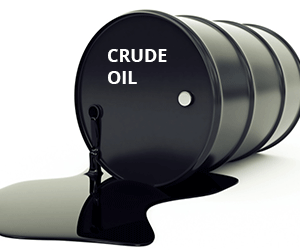Nigeria’s Bonny light crude oil blend maintained an average spot price of $54.55 per barrels in 2017 to become the second most valued crude oil blend in the oil price reference basket of the Organisation of Petroleum Exporting Countries (OPEC). a 2018 Annual Statistical Bulletin (ASB) of the OPEC has disclosed.
Obtained by THISDAY Monday in Abuja. the 53rd edition of the OPEC ASB which provided key statistical data for all of OPEC’s 14 member countries-Algeria. Angola. Ecuador. Equatorial Guinea. Gabon. Islamic Republic of Iran. Iraq. Kuwait. Libya. Nigeria. Qatar. Saudi Arabia. the United Arab Emirates (UAE) and Venezuela-stated that only the UAE’s Murban blend traded higher than the Bonny Light at $54.82 per barrel within OPEC’s reference basket.
It also explained that within other corresponding crude oil spot prices. Bonny Light maintained a good posture in 2017. trading below Malaysia’s Miri and Tapis blends which were sold at $56.93 and $56.29 per barrel respectively. as Mexico’s Isthmus blend sold at $54.60 b. and Norway’s Oseberg blend $55.04 b.
OPEC explained the ASB has been a product of numerous months of hard and labour-intensive work involving analysts. researchers and statisticians. both at its secretariat and that of its 14-member countries.
It added that the bulletin brings together data on exports. imports. production. refineries and shipping of oil across its member and non-member countries.
Also. a spot price is the current price in the marketplace at which a given asset such as a commodity-crude oil. gold or wheat. security or even currency-can be bought or sold for immediate delivery. In distinction to spot price. a security. commodity or currency’s futures prices are usually their expected values at specified future time and place.
Based on its reference basket and corresponding spot prices. OPEC’s ASB noted that Nigeria’s Bonny Light crude oil sold at an average price of $111.36 per barrel in 2013. $100.85 in 2014. $52.95 in 2015. $44.02 in 2016. and $54.55 in 2017.
It said on oil production that between 2013 and 2017. Nigeria produced 1.753 million barrels per day (mbd). 1.807mbd. 1.748mbd. 1.427mbd. and 1.535mbd respectively. noting that an average of 1.535mbd of oil was produced in 2017 as against 2.048mbd and 2.053mbd it produced in 2010 and 2000 respectively.
It added that Nigeria’s closest rival in Africa. Angola. which once overtook her during the heydays of militancy in the oil-bearing Niger Delta region. produced an average of 1.632mbd.
The report however indicated that Nigeria did not significantly increase her crude oil reserves within these periods. It said the country’s oil reserves stood at 37.071 billion barrels (bbls) in 2013. 37.448bbls in 2014. 37.062bls in 2015. 37.453bbls in 2016. and 37.453bbls in 2017
It said the number of active oil rigs in Nigeria were 59 in 2013. 46 in 2014. 29 in 2015. 9 in 2016 and 13 in 2017. while the number of producing wells in 2013 were 1.951. in 2014 – 2.010. in 2015 – 1.947. in 2016 – 1.668. and 1.777 in 2017.
On the downstream oil market. it explained that while other OPEC member countries like Kuwait. Ecuador. and Iran upgraded their domestic refining capacities. Nigeria only retained a 446.000bd refining capacity for the five-year period. with only the refineries operated by the Nigerian National Petroleum Corporation (NNPC) available in the country.
The four NNPC refineries in Port Harcourt. Warri and Kaduna. it said. had a refinery throughput of 95.000bd in 2013. 59.000bd in 2014. 24.000bd in 2015. 52.000bd in 2016. and 82.000bd in 2017.
Their demand for oil to refine within the period. it noted. were 385.000bd in 2013. 396.000bd in 2014. 408.000bd in 2015. 393.000bd in 2016. and 426.000bd in 2017.
According to it. an average of 692.600bd of the country’s crude oil went to Europe in 2017. 331.500bd shipped to North America. 512.600bd shipped to Asia and the Pacific countries. 50.100bd to Latin American countries. 221.800bd to African countries and 2.500bd sent to Middle Eastern countries.
 Iran Energy News Oil, Gas, Petrochemical and Energy Field Specialized Channel
Iran Energy News Oil, Gas, Petrochemical and Energy Field Specialized Channel




